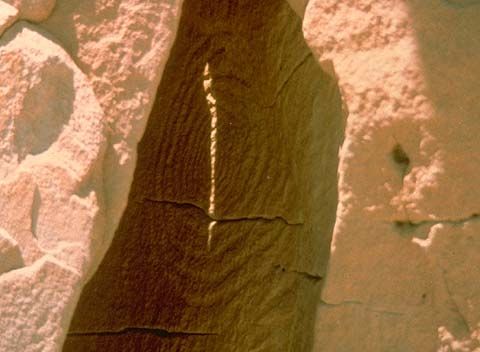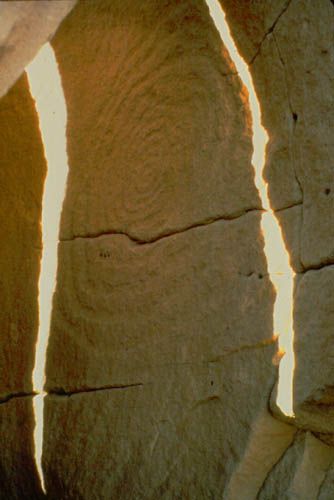Anasazi Indians Disappearance - Chaco Canyon Ruins
What Happened to the Anasazi ?

Pueblo Bonito is considered to be the greatest archaeological mystery in the United States. About 800 years ago, a whole people made up of more than 8000 people suddenly disappeared, in the desert of New Mexico, leaving behind a series of traces and ruins which were all to decipher. These people are known by the name of Anasazi indians which, in Navajo language, means “ancient ones”.
Anasazi cliff dwellings
Chaco Canyon is a canyon in New Mexico, 19 kilometers long and 1,500 meters wide, where the Anasazi people lived peacefully before disappearing. It all started at the end of the 19th century when, almost by chance, several explorers arrived in the Chaco Canyon. They discovered, at their feet, an imposing construction made up of 800 cliff dwellings: Pueblo Bonito, the city of the Anasazi. Some would call it their capital, while others opt for a spiritual center. It is certain that at the time of its construction, dated around the year 1000, there was nothing similar in this arid region of North America: an absolutely Pharaonic complex for the time.
Anasazi kivas

The anasazi kivas, round, underground and circular pieces, constitute the most famous architectural element. 20 meters wide and 5 meters high, located a little outside Pueblo Bonito, Casa Rinconada is the largest of its type. The anasazi kivas were probably places reserved for sacred ceremonies: in their roofs was practiced a hole through which spirits could enter and leave according to the liturgy of the old extinct anasazi tribe.
The Anasazi culture had a religious relationship with nature, in particular with the Earth and the Sun. In many kivas, at the dawn of the summer solstice, sunrays entering through the windows would reach a niche inside the building. A phenomenon which is still not interpreted, but which becomes even more evident on the site of Fajada Butte: the rock incision of the Sun Dagger represents two spirals; thanks to the slits present in the rocks, at the entrance to the cave, the largest spiral is crossed by a blade of light, during the summer solstice.

On the other hand, during the winter solstice, the sun enters two slits which delimit the outer edges of the spiral itself. A sort of calendar from a very distant time, engraved in stone. Besides the fact that they were oriented according to the surprising astronomical knowledge of the Anasazi tribe, these same kivas were also built at precise points on the ground. Such places, chosen by the shamans, released what was for them, a strong energy of the Earth, represented by a spiral.

Great roads
The main thoroughfares were another obsession of the Anasazi people. They built more than 300 kilometers of roads, of which the great northern route which dominates Pueblo Bonito is a majestic example: 33 kilometers traced with surprising precision. Achieving such alignment would be difficult even with a compass, an instrument that the Anasazi tribe did not have. A testimony demonstrating that their knowledge was much more advanced than archeology suspected.
Anasazi cannibalism
But this civilization also has another disturbing aspect. Scientific studies of human remains discovered in the Chaco Canyon seem to show that the Anasazi tribe practiced cannibalism. There are many clues: fractured skulls, bones emptied of their marrow, organic evidence in fossil feces and even traces of myoglobin (a protein found in muscles) found in the incrustations of a pot. And we also find in the middle of this desert a significant tomb, that of Richard Wetherill, one of the first explorers arrived at Chaco Canyon and killed precisely by the people he wanted to study.
But his testimony is revealing. Indeed, Wetherill wrote: “When we entered the Navajo Canyon and discovered the Anasazi ruins, our world was reduced to an indefinite number of centuries back. Everything was intact exactly as it had been left by the original inhabitants. The objects were stored in the rooms as if people had gone out to visit their neighbors. Perfect specimens of crockery were lying on the floor while iron utensils and other household items were found where the Anasazi women had left them for the last time. ”
Richard Wetherill described a surprising scene: an advanced civilization forced to abruptly abandon its main center, without any sign of battle or epidemic. What happened, what was the mysterious fate of the Anasazi people - the tribe of the Elders - such is the enigma that remains to be elucidated.









































































































































































































































































































































